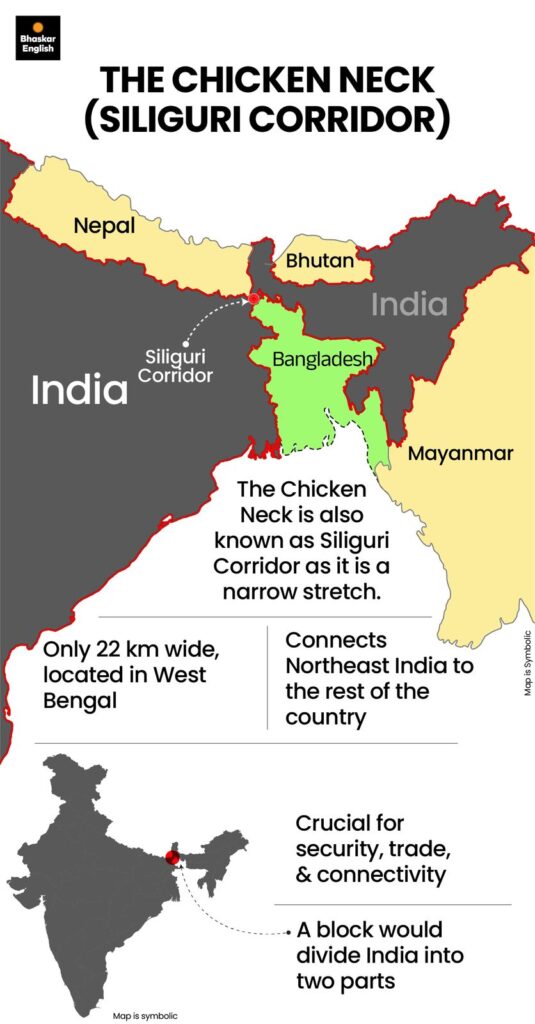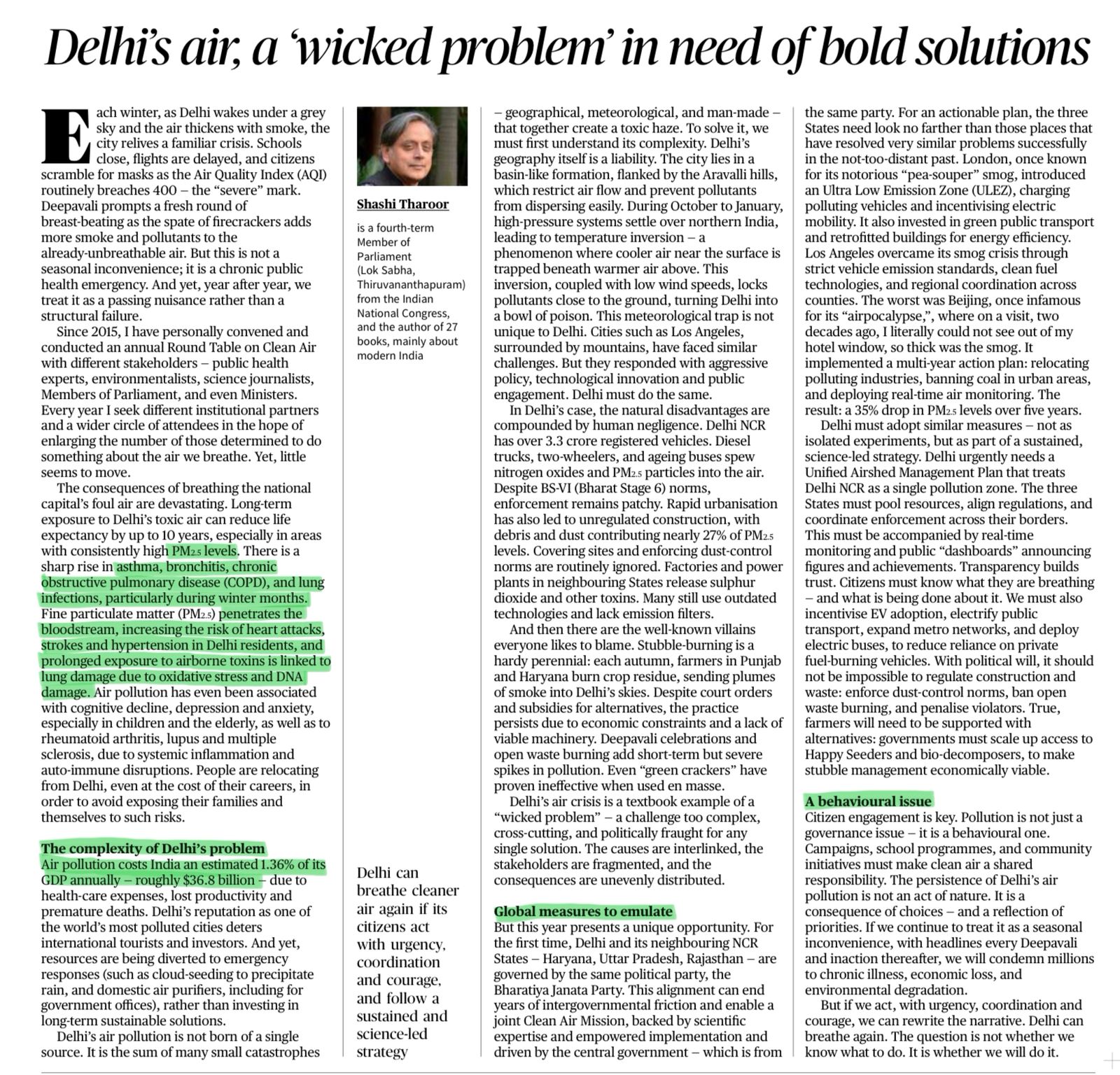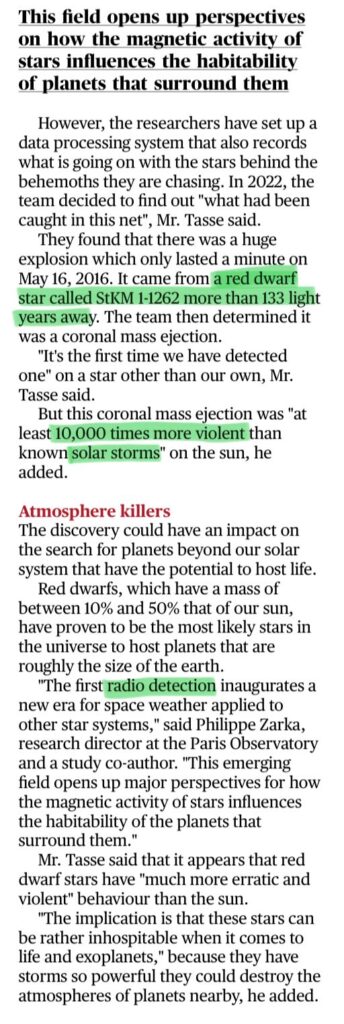17th Nov, 2025





Context
The Indian Army has established three new garrisons near the strategic Siliguri Corridor to reinforce its eastern frontier amid shifting regional dynamics, a new regime in Bangladesh, and concerns over China’s increased presence near the corridor.
I. New Garrisons – Regions of Creation
- Dhubri, Assam: Lachit Borphukan Military Station established close to the India–Bangladesh border.
- Kishanganj, Bihar: Forward base positioned to monitor movements near the Siliguri Corridor.
- Chopra, West Bengal: Forward base stationed near critical transit routes accessing the Northeast.
II. Why These Garrisons Were Created ??
- Siliguri Corridor vulnerability: Needed to secure India’s narrow link to the Northeast from potential threats.
- Changing regional politics: Shift in Bangladesh’s regime altering border security dynamics.
- Rising Chinese presence: Increased Chinese activities around the corridor and LAC raised strategic concerns.
- Geopolitical shifts: China’s Pakistan–Bangladesh trilateral in Kunming signaled attempts to build linkages excluding India.
- Demographic pressures: Illegal immigration into border districts required stronger monitoring and control.
III. Advantages of These Three Garrisons
- Enhanced surveillance: Improves monitoring of cross-border activities and sensitive approaches.
- Faster mobilisation: Troops can respond rapidly to any security breach along the corridor.
- Stronger BSF coordination: Army–BSF synergy increases effectiveness in guarding the India–Bangladesh border.
- Operational readiness: Maintains high preparedness levels for any sudden military or geopolitical contingency.
- Strategic deterrence: Reinforces India’s presence near the corridor to counter China–Pakistan regional manoeuvres.

Pandum Café in Bastar will provide dignified livelihoods and social reintegration opportunities to both surrendered Maoist cadres and victims of Naxal violence by training them in hospitality and helping them transition into mainstream community life.

The e-KYC rollout within MGNREGS is intended to authenticate workers’ identities and, by removing nearly 27 lakh ghost or ineligible beneficiaries, ensure that scheme funds and wages reach only genuine rural workers with greater transparency and accuracy

- The Problem
• Delhi faces a chronic public health crisis, with extremely high PM2.5 levels driving COPD, lung infections, heart attacks, strokes, hypertension, and even DNA damage.
• Pollution is causing cognitive decline, depression, anxiety, arthritis, and multiple disorders, reducing life expectancy by up to 10%.
- The Complexities
• Pollution comes from multiple sources: vehicles, construction dust, industry, stubble burning, fireworks, diesel gensets.
• Delhi’s basin-like geography and temperature inversions trap pollutants near the ground, amplifying toxicity.
• Fragmented governance across three States and multiple agencies weakens coordination and accountability.
• Economic compulsions keep polluting practices—like stubble burning and use of old vehicles—alive.
• Rapid urbanisation, outdated pollution-control norms, and unplanned growth worsen emissions.
- Global Measures to Emulate
• London’s Ultra Low Emission Zone (ULEZ) shows how congestion pricing + strict emission standards reduce vehicular pollution.
• European cities demonstrate success through EV adoption, public transport strengthening, renewable energy, and building retrofits.
• Global experience highlights that regional coordination, not isolated city action, is essential for lasting air-quality improvement.
- Behavioural Change
• Pollution is also a behavioural challenge, requiring shifts in driving habits, fuel use, construction practices, and compliance with rules.
• Citizens must adopt responsible mobility, reduce reliance on private vehicles, and support.


LOFAR – Key Facts
European network of low-frequency radio telescopes. Operated by: ASTRON (Netherlands Institute for Radio Astronomy).
Purpose: Detect low-frequency radio signals from extreme cosmic events (e.g., black holes, stellar eruptions).
The Discovery
• Event detected: First-ever coronal mass ejection (CME) on a star other than the Sun.
• Star: Red dwarf StKM 1-1262, about 133 light-years away.
• Intensity: Around 10,000 times stronger than known solar storms on the Sun.
Significance
• Shows that red dwarf stars can produce extremely violent magnetic storms.
• Such CMEs can strip atmospheres of nearby planets, reducing chances of habitability.
• Opens a new era of radio detection of stellar space weather.
TDF
“Delhi’s air pollution is a ‘wicked problem’ shaped by structural, geographic and behavioral factors.
Discuss the complexities involved in addressing it and evaluate the multidimensional measures required for sustainable improvement.”(250 words)




